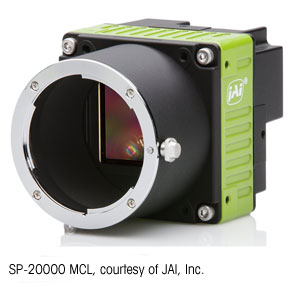
Today, printed circuit boards require more color vision solutions because the color of a component helps to identify each part. Plugs and connectors are color coded, and at the same time, the board is tracked using a black-and-white barcode. “These applications used to be done with a high-resolution monochrome camera, but now, you need to be able to sense color to make sure the right component and connector are in the right place,” Kinney explains. “The barcode will usually be located at the edge of the frame. If you use a single-chip color camera, you have to be concerned about color shading and halos at the edge of the image, and it’s made worse if you use cheap optics.”
White LEDs are made one of two ways: by applying a phosphor coating over a blue LED light that produces a broadband light closer to white light, or by mixing different-colored LEDs to make a broadband light source. Both methods result in a spectral continuum that is higher in some narrow wavelength bands within the white light spectrum compared to others. For the most challenging color vision applications, designers need to carefully match these “spikes” to the specific wavelengths. This is where choosing a lighting supplier with in-house engineers can really help, adds Metaphase’s Technical Sales Manager, Mark Kolvites. A quality supplier will make sure that the actual red, green, and blue (or more) LEDs mix to create a white light, or the blue LEDs with phosphor coating provide uniform illumination without hotspots that can cause trouble for automated inspection systems.
As the information above shows, color machine vision solutions can require in-depth knowledge of the physics behind machine vision. The good news is that by choosing the right supplier and partner, designers can solve applications where success isn’t just black and white.
refer to:http://www.visiononline.org/vision-resources-details.cfm/vision-resources/Is-Your-Machine-Vision-System-Color-Blind/content_id/4333
